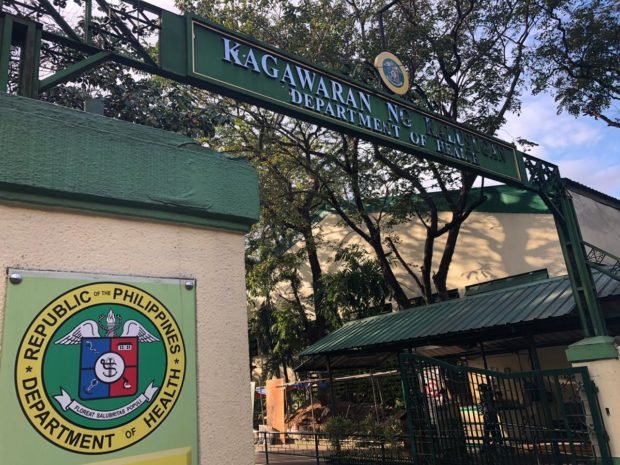
Facade of the DOH main office in Manila. INQUIRER.net file photo
MANILA, Philippines — The COVID-19 vaccines for next year will be funded by foreign loans to be secured by the government, the Department of Health (DOH) said on Wednesday, while the money for booster shots will come from unprogrammed appropriations that depend on the availability of excess revenue or funding.
In a House health committee hearing where it presented its P242.22-billion budget proposal for 2022, Health Secretary Francisco Duque III was asked by Deputy Minority Leader and Marikina City Rep. Stella Luz Quimbo why there was no allocation for the purchase of COVID-19 vaccines.
Duque pointed to an allocation of P45.4 billion to buy booster shots.
He added that the DOH initially proposed a P104-billion budget for COVID-19 vaccines for 2022, but the amount was reduced by the Department of Budget and Management (DBM) to P45.4 billion.
In a statement after the submission of the P5.024-trillion 2022 national expenditure program to Congress, the DBM said the P45.4 billion was placed under unprogrammed appropriations to “cover the COVID-19 booster shots of 93.798 million fully vaccinated Filipinos.”
As for the vaccines to be distributed in 2022, Health Undersecretary Mario Villaverde said these would be purchased through loans to be taken out by the national government.
“For next year, the loan will cover the first and second doses for certain types of vaccines, and a single dose for Johnson and Johnson … For next year, in case the technical side decides to implement booster shots, the DBM placed it under unprogrammed funds,” Villaverde said.
‘Not comfortable’
Both Quimbo and Iloilo Rep. Janette Garin expressed concern about this since unprogrammed appropriations depend on the availability of excess revenue or funding.
“I am not comfortable with an unprogrammed fund because usually, these don’t get funded,” Garin said as she suggested that the DOH consider realigning some line items in the programmed funds to purchase COVID-19 vaccines for next year.
She pressed Duque for a list of projects or line items that the DOH could realign to make way for the inclusion of the vaccines under programmed appropriations.
“We’re on virtual mode now, so there’s not much expenses on catering and travels. Like the Botika ng Bayan, there are many pharmacies selling generic drugs that are already operating and it’s an income-generating endeavor of local government units. Maybe we can shift that to vaccines and have the Botika ng Bayan funded under the unprogrammed funds. What can we sacrifice to allot funds for vaccines? Because it’s a matter of our survival for the coming years,” Garin said.
Duque replied by saying a realignment of funds was possible, “given the compelling reasons for prioritizing our vaccination program against COVID-19. We will identify projects and programs from where we can source the realigned funds to support a much more vigorous immunization program against COVID-19.”
Commitment sought
Health Undersecretary Rosario Vergeire also said that once there was a recommendation from the Health Technology Assessment Council for booster shots for fully vaccinated Filipinos, “we will go in that direction.”Garin also sought a commitment from the DOH to prioritize healthcare workers and the immunocompromised for booster shots, and that COVID-19 vaccines would eventually be given to children.
Duque said the original P104-billion proposal to the DBM was to cover other subpopulations, including children.
For 2022, the DOH has a proposed budget of P242.22 billion, of which P157.03 billion would go to Duque’s office.
The DOH budget includes funding for other attached agencies like the Philippine Health Insurance Corp., which would get P79.99 billion, or 33 percent of the total budget. Duque said a big chunk of the proposed budget or P78.83 billion was earmarked for programs under the Universal Health Care law, which included COVID-19 initiatives such as providing for 3.8 million COVID-19 tests and laboratory network needs.